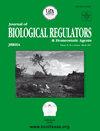在COVID-19疫苗接种中,过敏反应是一种罕见的反应。
摘要
过敏反应是一种严重的多系统反应,在引入原本无害的抗原后迅速发生。它的特点是气道和呼吸问题、心血管衰竭、粘膜炎症和其他并发症,所有严重症状都可导致死亡。ige依赖性过敏反应涉及肥大细胞(MCs),肥大细胞是导致过敏反应中可能发生的病理和致死现象的生物活性介质的主要来源。抗体介导的过敏反应可遵循多种途径,例如由携带FcεRI受体的MCs介导的途径,该受体可被极少量的抗原(包括疫苗抗原)激活并引发过敏反应。此外,与存在于嗜碱性细胞、中性粒细胞、巨噬细胞和MCs上的FcγR受体结合的高浓度IgG抗体也可引起过敏反应。因此,在接种疫苗时应控制IgG浓度。MCs的激活是过敏性反应的主要原因,需要立即用肾上腺素治疗以阻止严重的致命症状。MCs通过抗原结合和IgE的交联被激活,并释放出诸如组胺、蛋白酶、前列腺素、白三烯和炎症细胞因子等介质。这些化合物的释放会引起恶心、呕吐、荨麻疹、喘息、脸红、心动过速、低血压、喉部水肿和心血管衰竭。mRNA和病毒载体疫苗获得了美国食品药品监督管理局(FDA)的批准,在世界范围内引发了预防和治愈新冠病毒的希望。科学家建议不要给有过敏史的人接种疫苗。美国疾病控制和预防中心(CDC)建议,在接种COVID-19疫苗后,有任何直接过敏反应史的人继续观察约30分钟。迄今为止,预防SARS-CoV-2感染的疫苗尚未引起严重过敏反应的重大担忧,尽管在某些情况下,接种疫苗后会出现注射部位的疼痛和发红以及发烧。这些反应发生在接种疫苗后的最初24-48小时。据报道,过敏反应的可能形式也可能发生,特别是在40岁左右的妇女。但在接种了数千万次疫苗后,只有少数患者出现了这种严重的反应,发病率很低。对疫苗的任何成分,包括聚山梨酸酯和聚乙二醇,也可能发生过敏和严重过敏反应。迄今为止,还没有关于COVID-19疫苗过敏反应的确切信息。MCs和补体活化率高于其他人的个体可能有更大的过敏风险。此外,被称为类过敏反应的反应不是由IgE介导的,因为它们不涉及这种抗体,也可能发生在COVID-19疫苗接种中。这些非ige介导的反应通过MCs的直接激活和胰蛋白酶的产生而发生,但程度低于ige介导的过敏反应。然而,目前尚不清楚疫苗的哪种成分会引起过敏反应,以及哪种疫苗会引起最多的副作用,包括过敏反应。因此,已知对疫苗的任何成分过敏的个人不应接种疫苗。然而,如果发生过敏反应,这需要立即用肾上腺素治疗,以阻止严重的致命症状。总之,这篇社论的目的是鼓励人们接种疫苗,以消灭这种折磨世界人口的全球大流行,并使个人放心,过敏反应的发生率不会高于其他疫苗接种。Anaphylaxis is a severe multisystem reaction that occurs rapidly after the introduction of an antigen that would otherwise be a harmless substance. It is characterized by airway and respiratory problems, cardiovascular collapse, mucosal inflammation, and other complications, all severe symptoms that can cause death. IgE-dependent anaphylaxis involves mast cells (MCs) which are the main sources of biologically active mediators that contribute to the pathological and lethal phenomena that can occur in anaphylaxis. Antibody-mediated anaphylaxis can follow multiple pathways such as that mediated by MCs carrying the FcεRI receptor, which can be activated by very small amounts of antigen including a vaccine antigen and trigger an anaphylactic reaction. In addition, anaphylaxis can also be provoked by high concentrations of IgG antibodies that bind to the FcγR receptor present on basophils, neutrophils, macrophages and MCs. For this reason, the IgG concentration should be kept under control in vaccinations. Activation of MCs is a major cause of anaphylaxis, which requires immediate treatment with epinephrine to arrest severe lethal symptoms. MCs are activated through the antigen binding and cross-linking of IgE with release of mediators such as histamine, proteases, prostaglandins, leukotrienes and inflammatory cytokines. The release of these compounds causes nausea, vomiting, hives, wheezing, flushing, tachycardia, hypotension, laryngeal edema, and cardiovascular collapse. mRNA and viral vector vaccines have been cleared by the United States, Food and Drug Administration (FDA), generating hope of prevention and cure for COVID-19 around the world. Scientists advise against giving the vaccine to individuals who have had a previous history of anaphylaxis. The US Centers for Disease Control and Prevention (CDC) advises people with a previous history of any immediate allergic reaction to remain under observation for approximately 30 minutes after COVID-19 vaccination. To date, vaccines that prevent SARS-CoV-2 infection have not raised major concerns of severe allergic reactions, although, in some cases, pain and redness at the injection site and fever have occurred after administration of the vaccine. These reactions occur in the first 24-48 hours after vaccination. It has been reported that probable forms of anaphylaxis could also occur, especially in women approximately 40 years of age. But after tens of millions of vaccinations, only a few patients had this severe reaction with a low incidence. Anaphylactic and severe allergic reactions can also occur to any component of the vaccine including polysorbates and polyethylene glycol. To date, there is no precise information on allergic reactions to COVID-19 vaccines. Individuals with MCs and complement with higher activation than others may be at greater allergic risk. Moreover, the reactions called anaphylactoids, are those not mediated by IgE because they do not involve this antibody and can also occur in COVID-19 vaccination. These not-IgE-mediated reactions occur through direct activation of MCs and complement with tryptase production, but to a lesser extent than IgE-mediated anaphylaxis. However, at the moment it is not known exactly which component of the vaccine causes the allergic reaction and which vaccine causes the most side effects, including anaphylaxis. Thus, individuals who have a known allergy to any component of the vaccine should not be vaccinated. However, should an anaphylactic reaction occur, this requires immediate treatment with epinephrine to arrest severe lethal symptoms. In conclusion, the purpose of this editorial is to encourage the population to be vaccinated in order to extinguish this global pandemic that is afflicting the world population, and to reassure individuals that anaphylactic reactions do not occur with a higher incidence than other vaccinations.

 求助内容:
求助内容: 应助结果提醒方式:
应助结果提醒方式:


